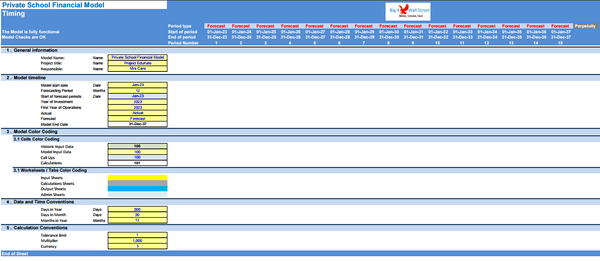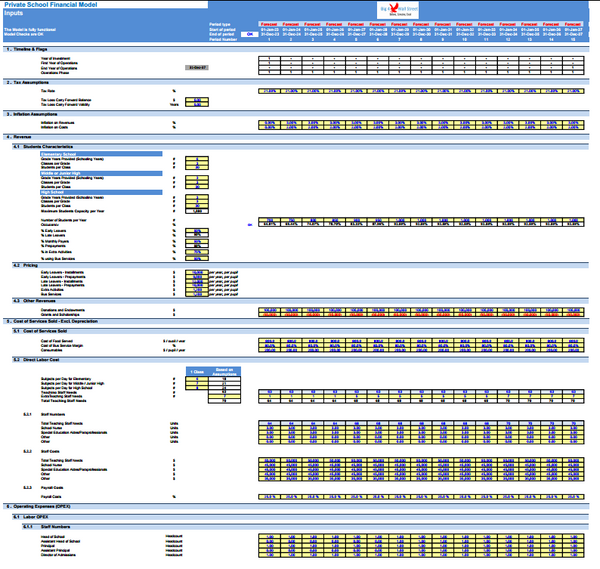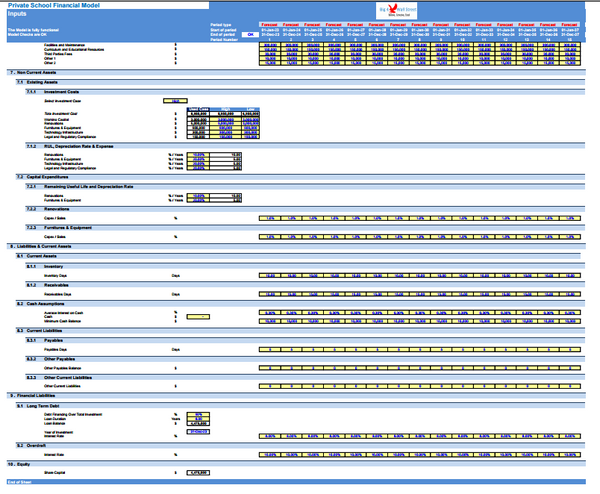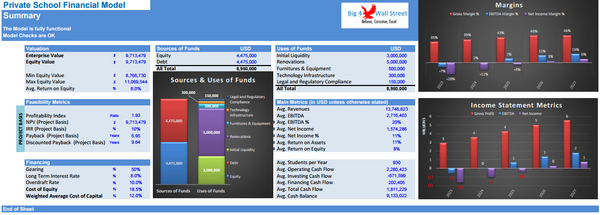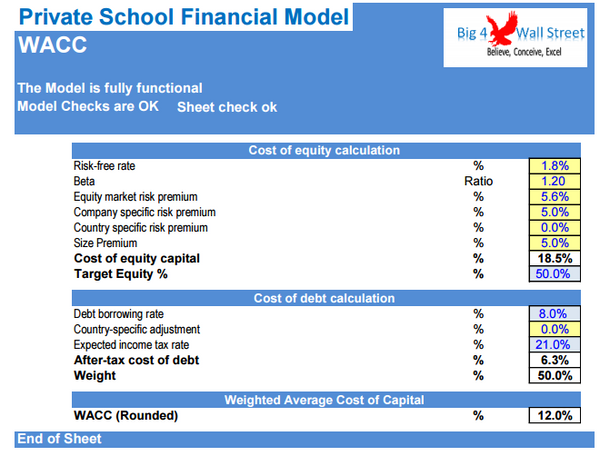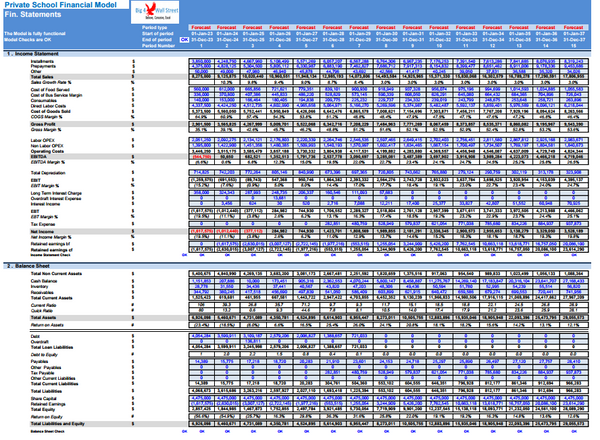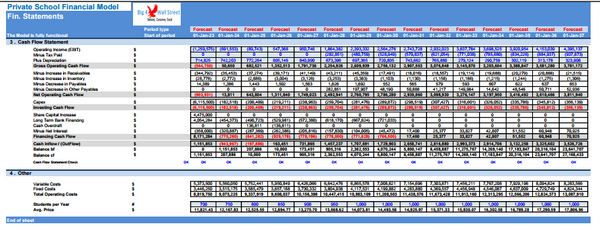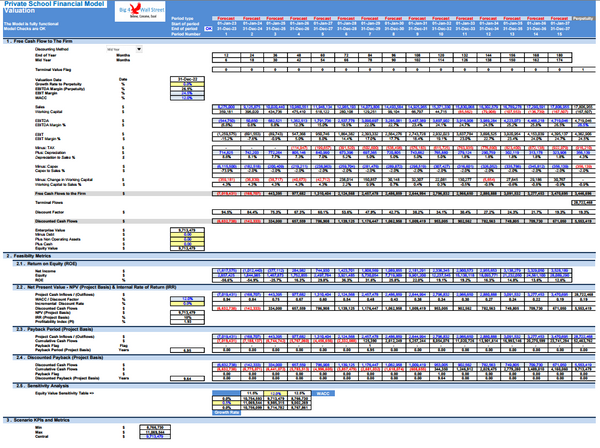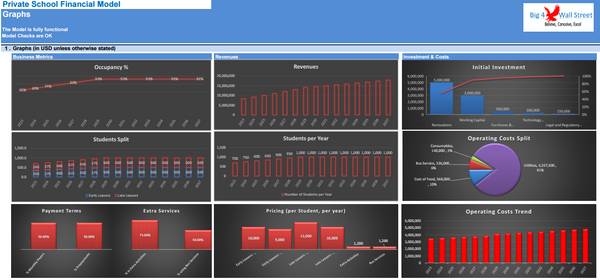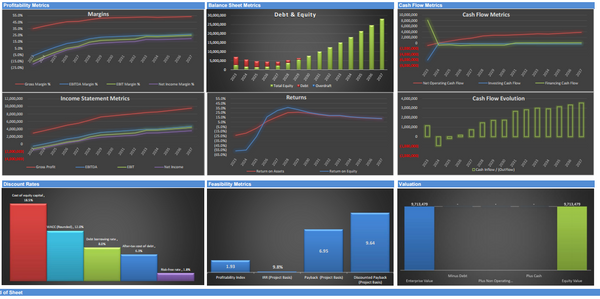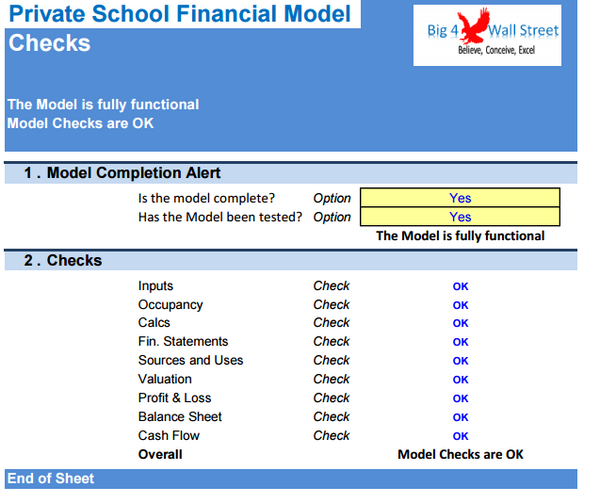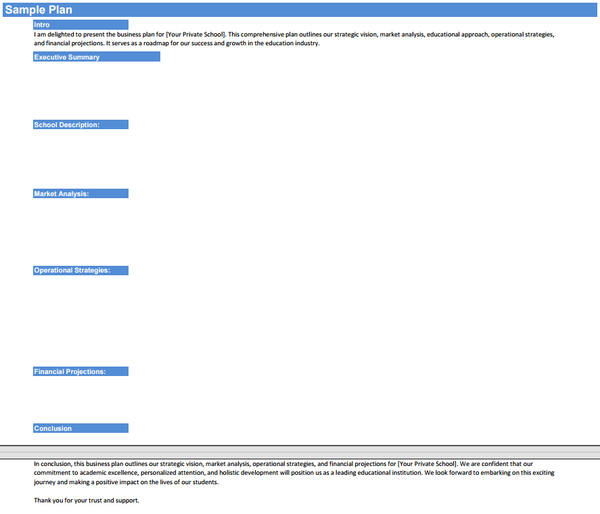Private School Financial Model - 10+ Year DCF & Valuation
A financial model for a private school business serves as a comprehensive tool to forecast and analyze the financial performance of the institution. It incorporates various assumptions, variables, and metrics to generate projected financial statements and evaluate the school's income, expenses, profitability, and cash flow.
The financial model is a dynamic and robust tool designed to provide a clear understanding of financial performance. It incorporates key assumptions, variables, and metrics to generate detailed projections of revenue, expenses, profitability, and cash flow.
Key Components of the Financial Model:
- Student Enrollment and Tuition: The financial model accounts for projected student enrollment. It also incorporates tuition rates and payment terms to estimate the school's revenue from tuition fees.
- Other Revenue Sources: In addition to tuition fees, the financial model considers other sources of revenue, such as fundraising events. These revenue streams are included in the model to provide a comprehensive picture of the school's income.
- Operational Expenses: The model captures various expenses, including staff salaries and benefits, facility maintenance and utilities, teaching materials and supplies, administrative costs, marketing expenses, and others. It allows us to analyze cost drivers and optimize expenditures.
- Financial Aid and Scholarships: The financial model incorporates scholarships, accounting for the estimated amount of assistance provided to eligible students. This helps us evaluate the impact of these programs on revenue and expenses.
- Capital Expenditures: As a private school, we may have capital expenditures related to facility expansion, equipment purchases, technology upgrades, or infrastructure improvements. The financial model factors in these investments and their associated costs to assess their impact on the financial position.
- Financial Statements: The financial model generates projected financial statements, including the income statement, balance sheet, and cash flow statement. These statements provide a comprehensive overview of financial performance, position, and liquidity.
Benefits of the Financial Model:
- Financial Planning and Budgeting: The financial model serves as a basis for financial planning and budgeting. It helps us set realistic targets, allocate resources efficiently, and monitor progress towards financial objectives.
- Resource Allocation: The financial model assists in making strategic decisions regarding resource allocation. It helps us prioritize investments, and optimize operations for sustainable growth.
- Fundraising and Investor Communication: The financial model enhances the ability to communicate financial projections and performance to potential donors, investors, or lenders. It demonstrates financial understanding and supports fundraising efforts.
- Risk Management: By incorporating different scenarios and stress-testing assumptions, the financial model allows us to identify and mitigate potential risks. It helps us plan contingencies and make informed decisions to ensure financial resilience.
In conclusion, the financial model is a valuable tool that enables us to forecast and analyze the financial performance of a private school business. It provides us with insights, supports decision making, and helps us achieve financial objectives while ensuring the long-term sustainability of the school.




